
精神影像学(英文)(Psychoradiology)(OA期刊)(国际刊号) 知网目次维普目次
- 主管单位:
教育部
- 主办单位:
四川大学华西医院
- 国际刊号:
2634-4416
- 国内刊号:
- 学科分类:
- 字数:
-
- 有无基金:
- 周期:
国际号刊-年刊
- 特殊属性:
外文期刊
- 电话:
- 邮箱:
psyrad@psychoradiology.org(2023年卷)
- 复合因子:
0
- 综合因子:
0
- 收录:
知网目次,维普目次
- 级别:
期刊简介
《精神影像学》期刊已被查看: 次
更新频次
单位占比
一作占比
投稿指南
1、该刊只有国际刊号。
2、投稿方式:在线投稿。
3、刊内网址:
https://academic.oup.com/psyrad(2023年卷)
4、投稿系统:https://mc.manuscriptcentral.com/psyrad
5、主办单位网站:http://www.hxyx.com/index.htm
(四川大学华西医院华西期刊社)
6、刊内邮箱:psyrad@psychoradiology.org
7、出刊日期:一年出版1卷。
2024年5月29日星期三
《精神影像学(英文)》投稿须知
【2023年信息】
Instructions to Authors
Submission / How to contact the editorial office All manuscripts are submitted and reviewed via the journal’s web-based manuscript submission system. New authors should create an account prior to submitting a manuscript for consideration. Questions about submitting to the journal should be sent to the editorial office at psyrad@psychoradiology.org.
Peer review process
All submissions to the journal are initially reviewed by one of the Editors. Suitable manuscripts are sent out for single blind peer review, by usually at least two independent reviewers.
Based on the feedback from these reviewers and the Editors’ judgment a decision is given on the manuscript.
Ethics
Authors should observe high standards with respect to publication ethics as set out by the Commission on Publication Ethics (COPE).
Plagiarism
Manuscripts submitted to Psychoradiology may be screened with iThenticate anti-plagiarism software in an attempt to detect and prevent plagiarism.
Consent from patients
Papers reporting experiments on patients or healthy volunteers must record the fact that the subjects’ consent was obtained according to the Declaration of Helsinki and that it has been approved by the ethical committee of the institution in which the work was performed.
Randomized controlled trials
Articles reporting the results of randomized controlled trials should follow the guidelines of the CONSORT statement.
Animal research
The ARRIVE guidelines must be followed when preparing manuscripts for Psychoradiology. The journal reserves the right to reject papers where the ethical aspects are, in the Editor’s opinion, open to doubt.
Third-party copyright
In order to reproduce any third-party material, including tables, figures, or images, in an article authors must obtain permission from the copyright holder and be compliant with any requirements the copyright holder may have pertaining to this reuse.
Conflict of interest
Oxford University Press requires declaration of any conflict of interest upon submission online.
Licensing - Open Access
All content published in Psychoradiology is made freely available online under an open access model. After a manuscript is accepted for publication, the corresponding author will be required to complete a licence to publish form. Open access fees are being waived for authors in Psychoradiology during 2021-2024.
Proofs
Authors will receive a link to access the PDF proof and an editable HTML version of their manuscript on our online system by email. Proofing instructions will accompany the email. Only essential corrections should be made at the proof stage.
Publication Model Information
For Psychoradiology final, corrected versions of manuscripts are published directly into the current issue in a continuous publication model.
Please see https://academic.oup.com/psyrad/pages/generalinstructions for complete information about manuscript preparation and submission requirements.
《精神影像学(英文)》(Psychoradiology)期刊简介
【微信公众号“精神影像学”信息】
杂志介绍
Psychoradiology 是由牛津大学出版社出版的英文学术期刊。该杂志为国际上第一本专注于精神影像学的英文杂志,涉及脑科学、精神病学、医学影像学、计算机科学、物理学等多学科的交叉领域。
杂志采取开放获取模式,旨在为学者们提供一个精神心理行为问题的影像学研究交流平台,以及促进神经精神疾病防治研究成果的转化。
更多信息详见杂志主页:https://academic.oup.com/psyrad.
主编介绍
该杂志主编包括四川大学华西医院的放射学家龚启勇教授、电子科技大学的神经科学家 Keith Maurice Kendrick 教授、北京大学第六医院的精神病学家陆林院士。
为什么选择Psychoradiology?
快速发表;
开放获取;
目前免除出版费用;
涉及范围广,覆盖学科多,包括脑神经科学、医学影像学、精神病学、心理学、介入医学、人工智能、计算机科学等学科。
欢迎投稿!
联系我们
psyrad@psychoradiology.org
投稿链接
https://mc.manuscriptcentral.com/psyrad
《精神影像学(英文)》(Psychoradiology)作者须知
【官网信息】
Instructions to Authors
Introduction
Submission / How to contact the editorial office
All manuscripts are submitted and reviewed via the journal's web-based manuscript submission system. New authors should create an account prior to submitting a manuscript for consideration. Questions about submitting to the journal should be sent to the editorial office at psyrad@psychoradiology.org.
Manuscript Types
Manuscript Type Definition
Research Article
Word limit*: 3000~6000
Abstract: Structured and no more than 300 words
Figures and/or tables: ≤6
Research articles provide new knowledge based on original research. Meta-analyses are also acceptable/encouraged in this category. These articles require appropriate statistical analyses. For clinical trial, please provide the trial registration information (registry name, trial ID, and URL) must be listed at the end of the abstract.
Research Report
Word limit*: ~600
Abstract: no abstract
Figure and/or table: ≤1
Research reports are concise, focused reports of original research articles. These should have no more than 7 authors and 10 references. Other persons who have contributed to the study may be indicated in an Acknowledgment. Research reports should be divided into the following sections: Introduction, Materials and Methods, Results, and Discussion. Online supplementary material is not allowed.
Methodology
Word limit*: ~2500
Abstract: one-paragraph abstract and no more than 250 words
Methodology articles provide a brief description and results of a systematic, theoretical analysis of the methods/techniques applied to clinical or basic research in psychoradiology. These are typically exploratory feasibility studies. These articles require appropriate statistical analyses.
Review
Word limit*: 5000~8000
Abstract: one-paragraph abstract and no more than 250 words
Figures and/or tables: ≤8
Review articles should be focused, comprehensive, in-depth reviews of the available scientific information on a topic of interest. Normally these are authored by senior experts in the field.
Case Report
Word limit*: ~2500
Abstract: one-paragraph abstract and no more than 250 words
Case Reports describe one to three cases or a single family of clinical interest or significance. Case Reports should be particularly original, such as the “first” cases of a disease or condition.
Image
Word limit*: ~200
Abstract: no abstract
Images in Psychoradiology capture the excitement of state-of-the-art imaging and discovery in the discipline. Images should be interesting, visually appealing, educational, demonstrative, and respectful of the patient. For information on how to submit figure files, please see the relevant sections of the manuscript preparation guide. The minimum resolution required for figures is 600dpi.
Perspective
Word limit*: ~2500
Abstract: no abstract
Perspectives are short reviews with an emphasis on emerging new concepts, findings and theoretical frameworks.
Commentary
Word limit*: ~1000
Abstract: no abstract
Commentaries are for a reader's comments/responses on a relevant topic or a recent article published in other journals.
Editorial
Word limit*: 500~1000
Abstract: no abstract
Editorials are the voice of Psychoradiology. These are usually written by Editors-in-Chief/editors. Usually, the purpose of these Editorials is to explain succinctly the importance of an original research report in the context of other work in the field.
Correspondence
Word limit*: ~ 500
Abstract: no abstract
Correspondence will be considered relating to recent articles published in Psychoradiology.
Book Review
Word limit*: ~1000
Abstract: no abstract
Book reviews on one or several books which cover a topic or viewpoint in psychoradiology. These are by invitation only.
Erratum and Corrigendum
Any significant error will be corrected and an erratum or corrigendum published online and in the print publication. Please inform the Editorial Office of any errors.
* the main body of the text excluding the abstract, title page, tables, figure legends and references.
Peer Review Process
All submissions to the journal are initially reviewed by one of the Editors. At this stage, manuscripts may be rejected without peer review owing to lack of novelty, serious scientific flaws or work lying outside the scope of the journal. This pre-review step usually takes 3-7 days.
Suitable manuscripts are sent out for single blind peer review, by usually at least two independent reviewers. Based on the feedback from these reviewers and the Editors' judgment a decision is given on the manuscript. The average time from submission to first decision is six weeks.
If a paper is not acceptable in its present form, we will pass on suggestions for revisions to the author.
In the case of manuscripts in which one of the authors is an editor on the editorial board of the journal, that editor will be blinded from reviewing or making decisions on the manuscript, and this will be acknowledged in the conflict of interest statement of the published paper.
Language Editing
Language editing, particularly if English is not your first language, can be used to ensure that the academic content of your paper is fully understood by the journal editors and reviewers. Please note that edited manuscripts will still need to undergo peer-review by the journal.
For further information, please visit the Language Services webpage.
Ethics
Authors should observe high standards with respect to publication ethics as set out by the Commission on Publication Ethics (COPE). Falsification or fabrication of data, plagiarism, including duplicate publication of the authors' own work without proper citation, and misappropriation of the work are all unacceptable practices. Any cases of ethical misconduct are treated very seriously and will be dealt with in accordance with the COPE guidelines.
Plagiarism
Manuscripts submitted to Psychoradiology may be screened with iThenticate anti-plagiarism software in an attempt to detect and prevent plagiarism. Any manuscript may be screened, especially if there is reason to suppose part or all of the text has been previously published. Prior to final acceptance any manuscript that has not already been screened may be put through iThenticate.
More information about iThenticate.
……
更多详情:
https://academic.oup.com/psyrad/pages/general-instructions
上一篇:科教发展评论(集刊)下一篇:区块链(英文)(IET Blockchain)(国际刊号)(2023年不收版面费审稿费)
《精神影像学》同类神经|精神病学期刊
-
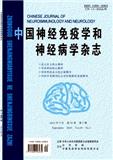
中国神经免疫学和神经病学杂志
科核,武B+
CN中文-双月刊影响因子0.963
-
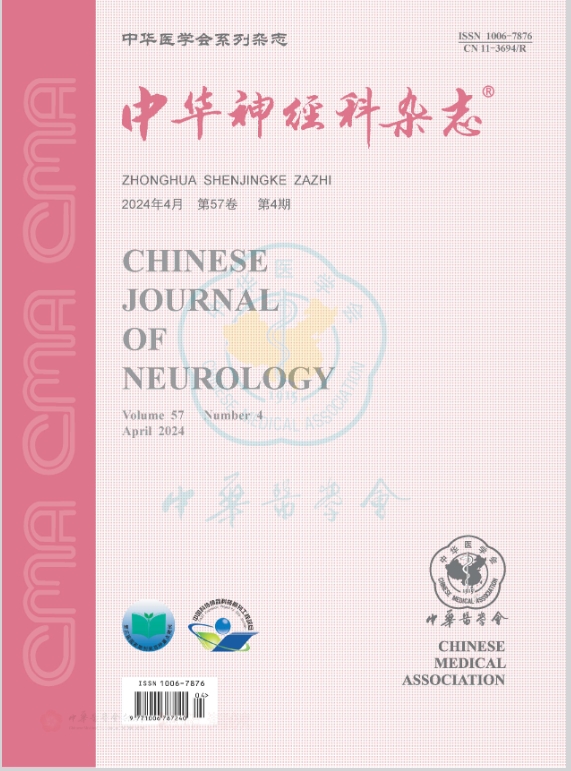
中华神经科杂志
北核,CSCD,科核,武A,高T2
CN中文-月刊影响因子2.077
-
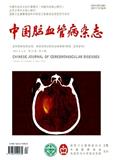
中国脑血管病杂志
北核,科核,CSCD扩,武A,高T3
CN中文-月刊影响因子1.261
-
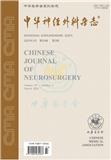
中华神经外科杂志
北核,CSCD,科核,高T2,武B+
CN中文-月刊影响因子1.26
-
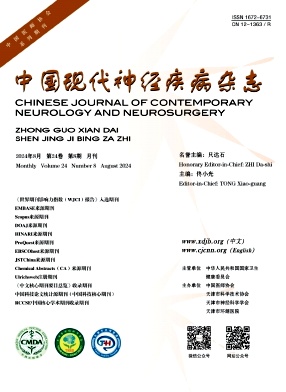
中国现代神经疾病杂志
北核,科核,武A-,CACJ-核心
CN中文-月刊影响因子0.986
-
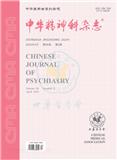
中华精神科杂志
北核,CSCD,科核,武A-
CN中文-月刊影响因子1.734
-
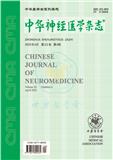
中华神经医学杂志
北核,科核,CSCD扩,高T3,武B+,CACJ-扩展
CN中文-月刊影响因子1.128
-
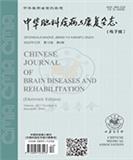
中华脑科疾病与康复杂志(电子版)
科核
CN中文-双月刊影响因子0.408
常见问题
-
精神影像学杂志社官网、联系方式是什么?
精神影像学杂志社官网:https://academic.oup.com/psyrad
投稿网址:https://mc.manuscriptcentral.com/psyrad
投稿邮箱:psyrad@psychoradiology.org(2023年卷) -
精神影像学杂志是核心期刊么?
精神影像学不是核心期刊,级别是:, 是:神经|精神病学分类下的知网目次,维普目次收录的期刊。
-
请问你们是精神影像学杂志社吗?
我们不是《精神影像学》杂志社。本站主要从事期刊信息展示与期刊推荐,不是任何杂志官网,直投稿件请联系杂志社。本站仅提供免费的学术指导、论文辅导、期刊投稿信息整理收集服务。
-
你们指导服务后可以保证文章被发表吗?
期刊发表的成功与否,主要取决于文章内容的质量。编辑老师会根据研究领域、创新性等多因素进行考量。我们会帮助您理解期刊的发表要求,助力提升发表几率,从而增加发表的机会。
-
晋级论文能否在报纸上发表?
在学术界,论文的发表往往被视为研究者职业发展的重要一环。晋级论文,即为了获得更高职称或学术地位而撰写的学术论文,通常需在专业期刊上发表。然而,许多人可能会问
